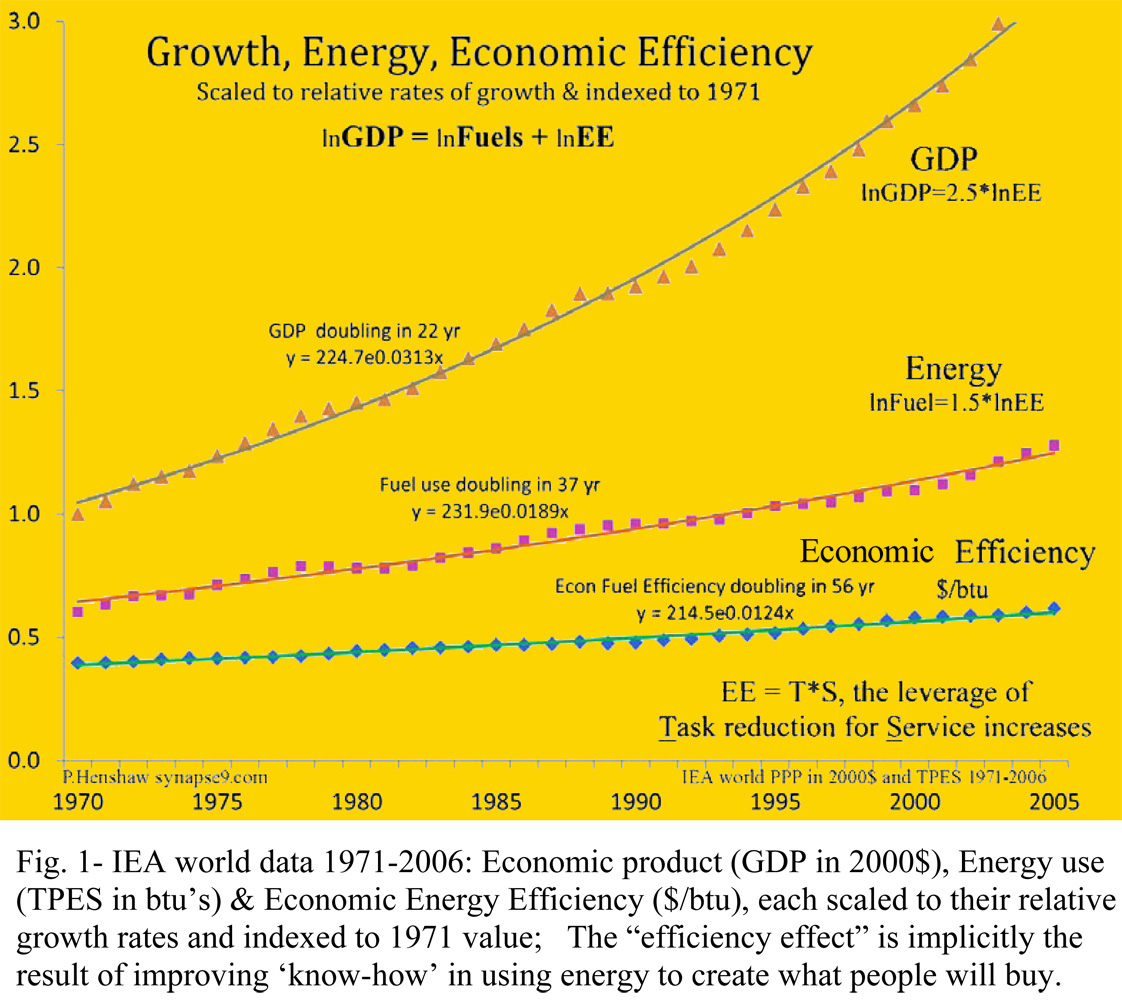 10/17/09
PFH Talk
23 slide presentation
: 36 min
audio for slides*
10/17/09
PFH Talk
23 slide presentation
: 36 min
audio for slides*
 10/17/09
PFH Talk
23 slide presentation
: 36 min
audio for slides*
10/17/09
PFH Talk
23 slide presentation
: 36 min
audio for slides*
Outline notes below:
1 - Outline of reasoning presented
2 - Supplemental outline list of efficiency effects usually
overlooked
The bottom line, What in the world is really going on here??
+ a blog post used as an announcement with a short discussion how the moral issues got confused
+ a research notes page with the older short essays on the general subject
+ and Inside Efficiencies a new short overview of the subject and choices
2 - When
counting the effects of efficiencies - A
few things we often leave out…
11/4/09
1. Efficiencies that save money or resources create savings that get used for other things. We tend to count the subtractions but not the additions…
a. Saved money and energy are like “printing money” and “creating energy” not previously available, and often used for leveraging other things
b. Say, a 10 year payback on insulating your house, uses resources to saves and create resources that didn’t exist before… having a positive EROI
i. First you have the added energy use and other impacts of the work
ii. You also free up energy as a resource for others to use for powering other uses with various impacts,
iii. After the 10 years you have what amounts to a new source of income for spending on other entirely new resource uses yourself,
iv. You’ve also given the bank a profit, maybe equal to half of the cost of the work, for it to use in multiplying more investments…
v. the reduced impact you counted is probably equaled by (i & ii) and exceeded by (iii & iv), thus the growth effect.
c. When adding up impacts of spending we may count only what we see, and miss the hidden impacts of the whole system that delivered the goods.
i. we add up the impacts of the physical processes by which things are made, and ignore the usually larger hidden impacts of:
1) the employee, business operation and finance costs and impacts
2) the embodied business development costs and impacts
3) the resource depletion opportunity costs
2. New efficiencies can collapse whole networks of mature technologies,
a. Free internet media now threatens the model of professional journalism
b. New technology used by low wage people can deny markets to formerly well paid people.
3. Creating efficiencies does determine what other people will use them for
a. Saving water where that was a supply barrier to development, invites development, expanded urban infrastructure and demand on all resources.
4. "Do more with less" is what people want and but also and ever steeper climb
a. Matching the efficiencies of competitors is needed to keep investors.
b. With unlimited resources it has the effect of sharing ways to have more
c. With limited resources the effect is sharing ways to take more from others.
5. Efficiencies are a limited resource that gets ever more expensive,
a. Finding ever greater efficiencies is a non-renewable resource, with the same depletion points of vanishing return as diminishing EROI resources. You can plan on their becoming too expensive to use.
b. 2nd law efficiency limits for technologies and whole systems may only be seen in diminishing returns on investment for no other apparent cause.
6. Efficiency has two faces, like Jekyll and Hyde, benefits that become real dangers, like relying on increasing use of specialization or monocultures.
a. Increasing control is decreasing tolerance. It leads to loosing control due to complications that more tolerant designs can overlook.
b. Environmental adaption benefits from complex diversity. Uniformity reduces options, adds to inflexibility and instability in response to change.
c. Accelerating coordinated change becomes accelerating uncoordinated change due to increasingly narrow learning and delayed response.
7. Logic makes computers very efficient for problem solving, but needing perfect inputs to get meaningful outputs
a. Computers treat complex questions as “garbage in” to result in “garbage out”.
b. Nature’s way of computing is wasteful in every step, but takes “garbage in” and produces “fruit and vegetables out” or “garbage in” with “art and music out” using physical system complexity as its tool.
c. The ability to sort out undefined complexities to select what problem needs to be solved, that computers can't do at all, seems to be an important efficiency too.